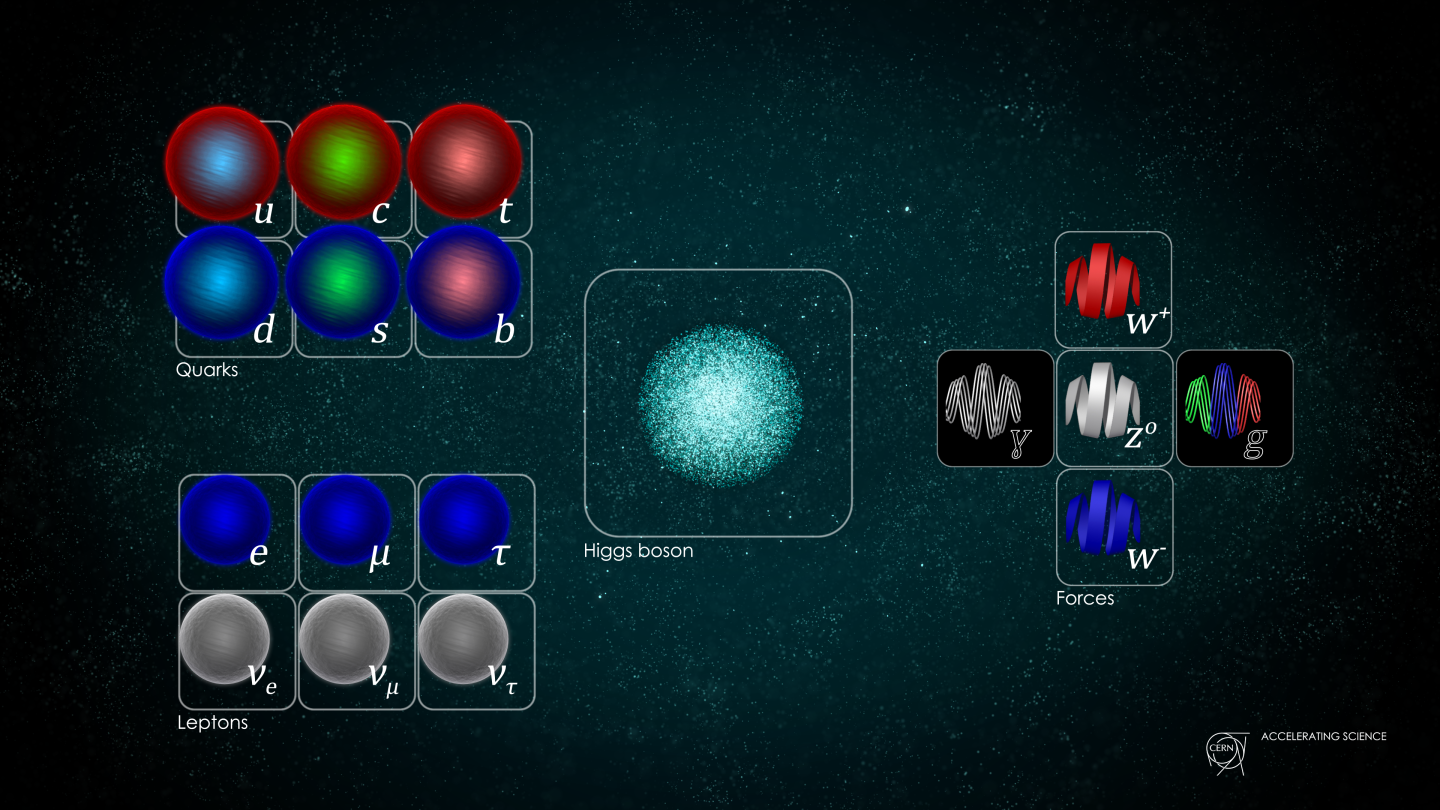The Standard Model of particle physics
Since the 1930s, the theoretical contributions and discoveries of many physicists have resulted in a remarkable insight into the fundamental structure of matter: everything in the universe is made of a few basic building blocks called fundamental particles, ruled by four fundamental forces. The best understanding of how these particles and three of the forces are related is encoded in the Standard Model of particle physics. This highly elegant theory classifies elementary particles according to their respective charges and describes how they interact through fundamental interactions. Developed in the early 1970s, the Standard Model has successfully explained almost all experimental and previous results accurately across a wide range of preferences. Over the years and through many experiments, the Standard Model has established itself as a well-corroborated theory.
Matter particles
All matter around us is composed of elementary particles, the building blocks of matter. These particles occur in two basic types: quarks and leptons. Each group contains six particles related in pairs, also called “generations". The lighter, more stable particles belong to the first generation, and the heavier, less stable particles belong to the second and third generations. All stable matter in the universe is made of particles that belong to the first generation; any heavier particles quickly decay into more stable ones. The six quarks are paired in three generations – the up quark and the down quark form the first generation, followed by the charm quark and strange quark and then the top quark and bottom quark (or beauty quark). Quarks also come in three different "colors" and only mix to form colorless objects. The six leptons are arranged similarly into three generations – the electron and electron neutrino, the muon and muon neutrino, and the tau and tau neutrino. Electrons, muons, and taus have significant electrical charge and mass; neutrinos are electrically neutral and have very little mass.

Image credits: Daniel Dominguez/CERN
Forces and carrier particles
There are four fundamental forces at work in the universe: the strong force, the weak force, the electromagnetic force and the gravitational force. They work in different ranges and have different qualities. Gravity is the weakest but has an infinite range. The electromagnetic force also has an infinite range but is many times stronger than gravity. The weak and strong forces are effective only in a very short range and dominate only at the level of subatomic particles. Despite its name, the weak force is much stronger than gravity, but, in fact, it is the weakest of the other three. The strong force, as the name suggests, is the strongest of all four fundamental interactions. Three of the fundamental forces result from the exchange of force-carrying particles, which belong to a broader group called bosons. Matter particles transfer discrete amounts of energy by exchanging bosons with each other. Each fundamental force has its corresponding boson - the strong force is carried by the gluon, the electromagnetic force by the photon, and the W and Z bosons are responsible for the weak force. Similarly, although not found, the graviton must be the corresponding force-carrying gravity particle. The Standard Model includes the strong, the weak, and the electromagnetic forces and all their carrier particles, well explaining how these forces act on all matter particles. However, the most familiar force in our everyday lives, gravity, is not part of the Standard Model. It is difficult to fit into a single framework the quantum theory – used to describe the micro subatomic world – and the general theory of relativity – used to describe the macro world. Making them mathematically compatible in the context of the Standard Model still represents a challenge. Nonetheless, fortunately for particle physics, the effect of gravity is so weak as to be negligible when it comes to the tiny scale of particles. Only when matter is present in voluminous quantities is the effect of gravity significant, on the scale of the human body or planets, for example. So, the Standard Model still works well despite its reluctant exclusion of one of the fundamental forces.
Text adapted from: Particles of the Standard Model of particle physics